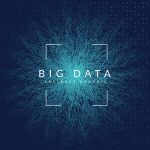Data visualization is not just about creating pretty charts and graphs; it’s a powerful tool for communicating complex information in a clear and compelling way. In today’s data-driven world, mastering the art of data visualization is essential for businesses and professionals across various industries. In this blog post, we’ll explore strategies for effective data visualization that go beyond aesthetics and enhance data presentation and communication through visual storytelling.
The Power of Data Visualization
Data visualization is the graphical representation of data to reveal patterns, trends, and insights. When done right, it simplifies complex data, making it accessible and actionable. Here’s why it matters:
1. Clarity and Understanding: Visualizations help audiences quickly grasp information that would be challenging to comprehend in raw data form.
2. Engagement: Visuals are inherently engaging. They capture attention and encourage exploration, increasing audience retention and understanding.
3. Decision-Making: Well-crafted visualizations empower decision-makers with data-driven insights, enabling them to make informed choices.
4. Storytelling: Effective data visualization tells a story, guiding the audience through a narrative that highlights key findings and takeaways.
Strategies for Effective Data Visualization
1. Know Your Audience: Tailor your visualizations to your audience’s level of expertise and their specific needs. Consider what insights they are seeking and how to present the data to meet those needs.
2. Choose the Right Type of Visualization: Select the appropriate chart or graph for your data. Bar charts, line graphs, scatter plots, and heatmaps are just a few options. The choice should align with your data’s characteristics and the message you want to convey.
3. Simplify and Focus: Avoid clutter and unnecessary elements. Simplify your visualizations by eliminating distractions and focusing on the most critical data points. Less is often more when it comes to effective data communication.
4. Use Color Thoughtfully: Color can enhance or detract from the message. Choose a color scheme that is easy on the eyes and conveys meaning. Use color sparingly to highlight key data points or trends.
5. Provide Context: Context is crucial for understanding data. Include labels, titles, captions, and annotations to explain what the visualizations represent and the significance of the findings.
Visual Storytelling in Data Visualization
Visual storytelling is a compelling way to communicate data. It transforms data visualizations into narratives that engage and inform. Here’s how to incorporate visual storytelling into your data presentations:
1. Start with a Hook: Begin with a captivating visual or a compelling question to pique the audience’s interest.
2. Tell a Story: Structure your data presentation like a story with a beginning, middle, and end. Build a narrative that guides the audience through the data’s journey.
3. Highlight Insights: Use visual cues and annotations to draw attention to key insights or data points that support your narrative.
4. Showcase Trends: Use trends and patterns in the data to create a sense of progression or change over time.
5. Engage Emotionally: Connect with your audience on an emotional level. Share relatable stories or anecdotes that humanize the data.
Tools for Effective Data Visualization
There are various tools and software available to help create effective data visualizations, such as Tableau, Power BI, and Datawrapper. These tools offer user-friendly interfaces and a wide range of customization options to bring your data to life.
In conclusion, mastering the strategies for effective data visualization is essential for anyone looking to communicate data-driven insights clearly and persuasively. By knowing your audience, choosing the right visualizations, and incorporating visual storytelling techniques, you can transform data into a powerful tool for decision-making and engagement.
If you’re interested in learning more about data visualization or need assistance in creating impactful visualizations for your data, please feel free to contact us.



